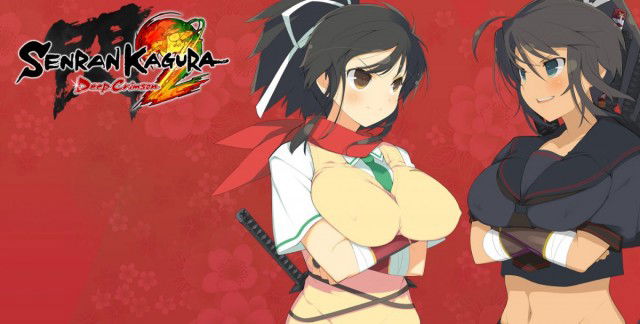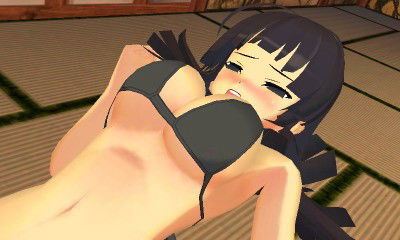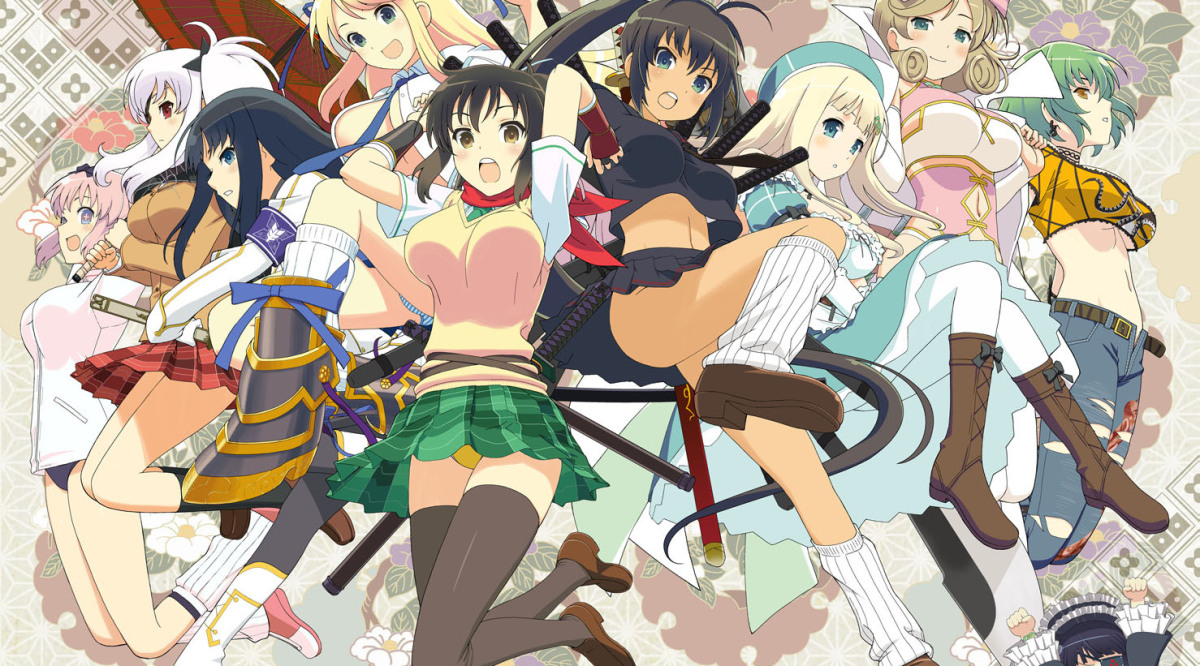Game Name: Senran Kagura 2: Deep Crimson
Platform(s): Nintendo 3DS
Publisher(s): Marvelous Interactive
Developer(s): Tamsoft
Release Date:9/15/2015
Price:$49.99 (physical), $39.99 (digital)
It seems like nowadays, sensitivity to suggestive themes is at an uncontrollable high. Make no mistake; everyone has a right to their own opinions and tastes, but there is a line between themes like extreme violence and sexuality acting as a crutch for a poor game and those same themes working in unison with the game to create a unique experience. Think of it as slathering a burnt steak in sauce as opposed to cooking a well-marinated steak to perfection; one uses the extra element to cover inherent flaw in the core product where the other takes the extra ingredient and uses it to intentionally shape the final experience. With that, I introduce you to Senran Kagura 2: Deep Crimson.
Throughout its existence, Senran Kagura has been about two things: Ninjas and T&A; combining fast-paced combat in the style of the Dynasty Warriors titles with the sensibilities of an ecchi anime. Naturally, this combination is hit or miss in the extreme. However, the series is not meant to be a wide-reaching blockbuster. It serves as an honest artistic expression; for better or for worse.
As was stated, the gameplay is at its core similar to games in the Dynasty Warriors style; with the player controlling individual characters against hordes of enemies that are typically much weaker than the player on their own, but are made more challenging by attacking in numbers. This particular gameplay style is rather polarizing as players can get by with pressing the basic attack button repeatedly until they win, which some would understandably see as monotonous, but with such a system, the player gets back what they put into it. In reality, the combat system is quite deep; offering two base types of attacks which branch into each other for varied potential combos across all characters. In addition, each character has two forms: Standard and Shinobi. Typically, the standard form has a weaker combo string, whereas Shinobi form usually has better combos in addition to granting the player access to super attacks known as “Secret Ninja arts”. It would stand to reason that one would want to transform as soon as possible to gain access to better tools, but transforming in itself regenerates all lost health, meaning that in difficult fights, it would be far more prudent to put up with the reduced potential of the character’s standard form until the health regeneration will be of real use.
Even the Secret Ninja Arts have their own depth, with each character having three distinct options and serving different purposes. At first, I thought it was broken up into three universal categories, each costing one more scroll (combat resource) than the last: Crowd control attacks, high-damage single-target attacks, and high-damage area attacks. That proved to be more or less true, but they also correspond to the game’s clothing system. In fights, major characters can lose clothes by taking damage. Some may see it as shameless fan service, and they would not be wrong to say that, but it also serves a purpose in that a character’s current amount of clothing is directly proportional to that character’s defense; meaning the more a character is stripped, the more damage they will take. With that said, the three types of Secret Ninja Arts damage the bottom half of an outfit, the top half of an outfit, and both respectively; meaning that a player must find ideal ways to use those attacks to make the fight easier for themselves. There are also Secret Ninja Arts that can only be performed in Co-op for the cost of three scrolls from each girl, and though they did not seem to have any special clothing-based effects tied to them, they are guaranteed to damage every enemy currently in the field of play.
For all the explanation the gameplay requires, these sequences do not last very long. Across the board, story missions take around two to five minutes to complete, meaning a lot of time will be spent on watching the characters interact. Not only that, but this time with the characters plays out like a comedy/action anime, which brings us to an important distinction: though Senran Kagura is very action-based, it is also very much a visual novel in the vein of Phoenix Wright or even the later Mortal Kombat games; where rather than being in control of the experience through and through, the player only plays out key moments of interest and ultimately is just along for the ride.
Visually speaking, Deep Crimson is a marvel for its platform. The framerate is consistent, the models are of good quality, and certain *cough* extremities *coughcough* have mind-bogglingly good physics. However, it can be rather hard to appreciate enemies as most of them are too small on the screen to get a good look at. Other than that, even though the 3D anime style makes some characters look like half-monkey precious moments figurines from certain angles, they all look good for the most part.
The sound is quite good as well, with all the sound effects and voices being crisp and distinct, though with so many enemies to dispatch, the hit sounds may become somewhat annoying after a while. Beyond that, the OST is amazing, and is available through two CDs that come with the physical version; blending classic kung-fu flick tunes with heavy metal jams to get the blood pumping during intense fights.
In the end, however, the value is entirely based on the sensibilities of the person playing the game. Fans of anime (and especially ecchi) will be able to squeeze much more out of this game than most, as they are more likely to enjoy the anime-like format of the narrative (this goes double if you have a concept of “best girl” [spoilers: it’s Daidoji]). Furthermore, the difficulty seems to be a bit skewed; the missions all ramp up in difficulty, but the game functions on a leveling system across 10 characters with no more than two being in use at any given time. Because of this, certain girls will become under-leveled between the levels where they are needed. This means that grinding in past story missions or the game’s challenge mode is all but necessary, which can break up the enjoyment and flow of the story.
However, between the available challenge modes, the ability to play co-op locally or online, and obscene levels of customization across the girls; Senran Kagura 2: Deep Crimson reaches out perfectly to its target audience.
Warning: may cause eye strain
Shame is a myth
Senran Kagura is a niche series for sure, but that does not make it bad. The shameless fan service is blended in in such a way that it’s an organic part of the game’s aesthetic. Some people may like it, some may not, but it’s hard not to respect a company putting out games with such controversial theming in an age where nobody wants to take risks.
Pros:
- Tight, responsive, satisfying combat
- Great characters
- Strong narrative (even if a bit on the stereotypical anime side)
Cons:
- gameplay camera takes some getting used to
- Necessity for grinding characters in between story missions
- Story is somewhat short
- Lacking in inherent replay value
-
Gameplay - 7.5/107.5/10
-
Graphics - 8/108/10
-
Sound - 8/108/10
-
Value/Replayability - 6/106/10






